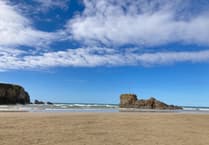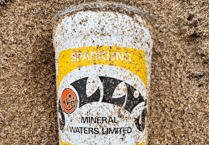What to do on a rainy Saturday afternoon? Explore Cornwall’s industrial heritage, in what was once known as “the richest square mile in the world”. Cornwall Gold and Tolgus Mill, on the road between Redruth and Portreath, host a variety of activities, many of which are free and family-friendly to boot.
Tin has been streamed in this area for 500 years, and Tolgus Tin Streaming Mill was built in 1865 by three Cornish brothers – John, Jim and Tobias Uren, who had made their money in the mines of South Australia. On their return, they bought a set of crushing stamps and set about extracting tin from the waste produced by the surrounding mines.
Today, Tolgus is the oldest working tin mill in Cornwall. While commercialproduction ceased in 1986 with the crash in tin prices, it continued on aheritage basis, with all findings incorporated into Cornwall Gold’s Tolgus jewellery ranges, a percentage of the profits from which is reinvested back into the Grade II listed mill.
A free interactive exhibition was launched in March and dominates the entrance, bringing Cornwall’s rich tin history, from the Bronze Age to the21st century, to life in an evocative way. Exhibits include original machines and artefacts, the fascinating tales of the people who worked here, and a digital representation of the mines that spread out under our feet.
If retail therapy is your thing, you can’t fail to be seduced by the shop. Cornwall Gold sells a vast selection of jewellery, in a variety of precious metals and including diamonds and freshwater pearls. In the onsite workshop, goldsmith David Mannerings helps customers to design bespoke pieces, often by upcycling old jewellery with emotional resonance.
We arrived in time for lunch on Saturday. Upon parking, take a moment to consider the meaning of the Welcome Stranger monument in the car park. It marks the event in 1869 that two Cousin Jacks – miners who had left Cornwall to find work across the globe – discovered the largest ever gold nugget in Australia, worth £2.3m at current prices. Their descendantsgathered at Cornwall Gold in 2019 to celebrate the 150th anniversary of the momentous occasion.
In The Cornish Pantry, we fuelled up as a Cornish miner would – with a proper Cornish pasty, of course. It’s worth mentioning that a popular choice here is the all-day breakfast, served on a miner’s shovel for added novelty value. Have a look around the restaurant for other Cornish recipes totry at home (the Cornish under-roast will be making an appearance chez Newton some time very soon).
Next, we strolled around the new exhibition, learning about the machines and processes used to extract the smallest particles of tin from local mining waste – from huge stamping machines that crush the rocks, shaking tables that separate the tin ore, to the purifying process of assaying and smelting black tin ore into white tin ingots.
The display also reveals the human stories behind the mill. Work took place overground, and was therefore safer than Cornwall’s underground mines, and as such provided work for injured and elderly miners – like Telfer Mitchell, who had injured a leg in a lift collapse.
But make no mistake - this was still punishing work, dangerous and dirty. Women, known as bal-maidens, were employed to break up rocks – you can hear the memories of 100-year-old Minnie Daniels here. Even children were put to use in noisy, dusty and wet conditions.
You can visit the mine itself to get a feeling of the utilitarian workingconditions. (A highlight of this section was meeting a friendly local moggy,known as Garfield, who has made himself very comfortable and clearly loves the fuss he gets from every passing cat-lover).
By far the busiest area was the gold-panning station. Families lined up along a channel filled with sand and water; dip your pan, then shake it and keep an eye out for glints of gold, which are yours to take home.
Next, we headed to Cornwall Gold’s Pick A Pearl station, where Donna guided us through the process of choosing an oyster to be shucked, revealing its treasure. The molluscs are farmed so each one contains a pearlworth at least £44, the price of the activity; it’s then graded, and can betransformed into a piece of beautiful jewellery at an extra cost.
This was Daughter’s treat, and she chose well - we were delighted to see not one, but two freshwater pearls squeezed out before our very eyes – ideal for a pair of earrings. As a bonus, we were given a token to donate to the restoration project we most wanted to support in the mine: the round frame, the roof or the waterwheel.
We returned home educated in local history, grateful to have a clean and safe job, and determined to go back soon for an all-day breakfast.





Comments
This article has no comments yet. Be the first to leave a comment.